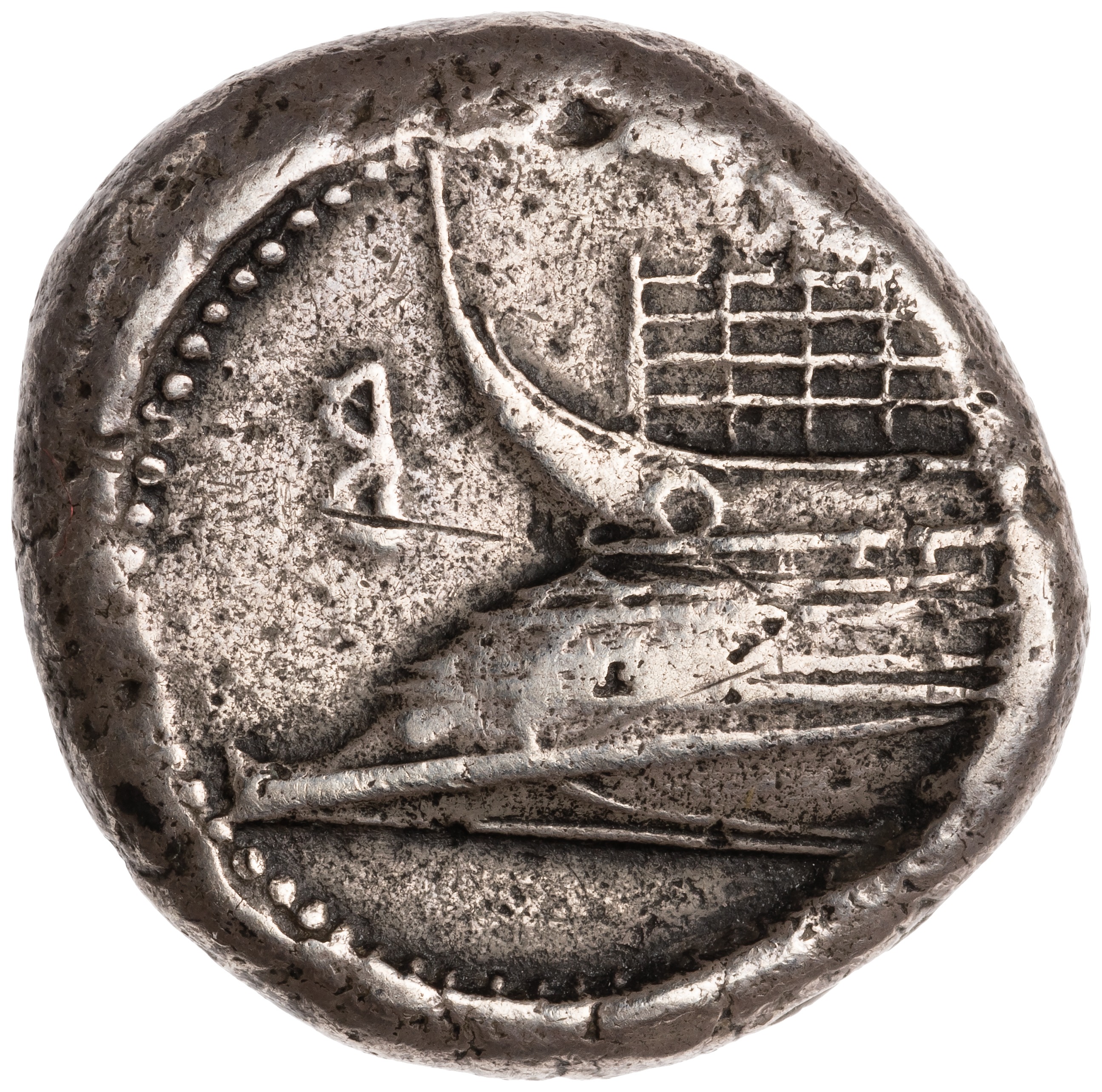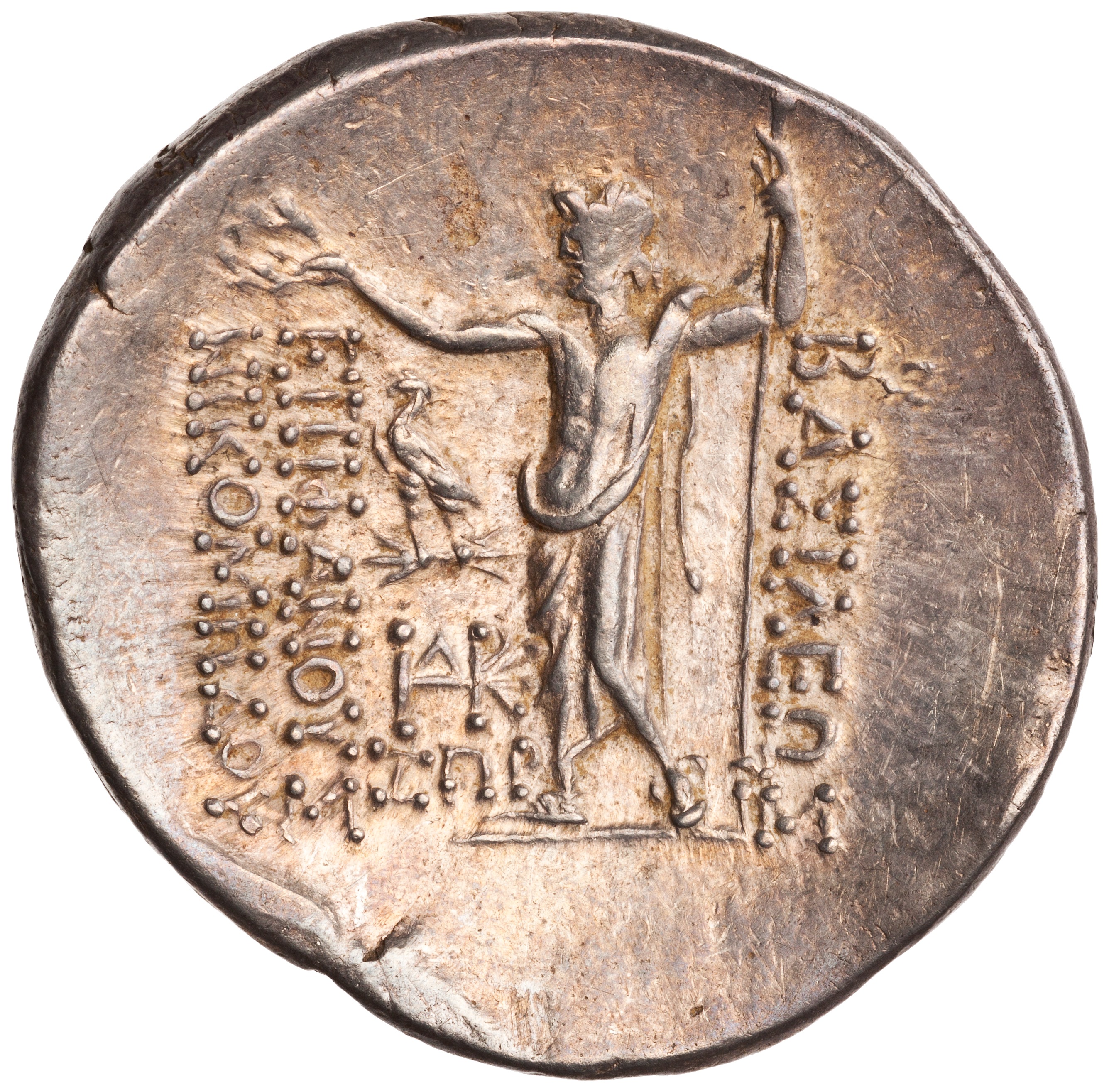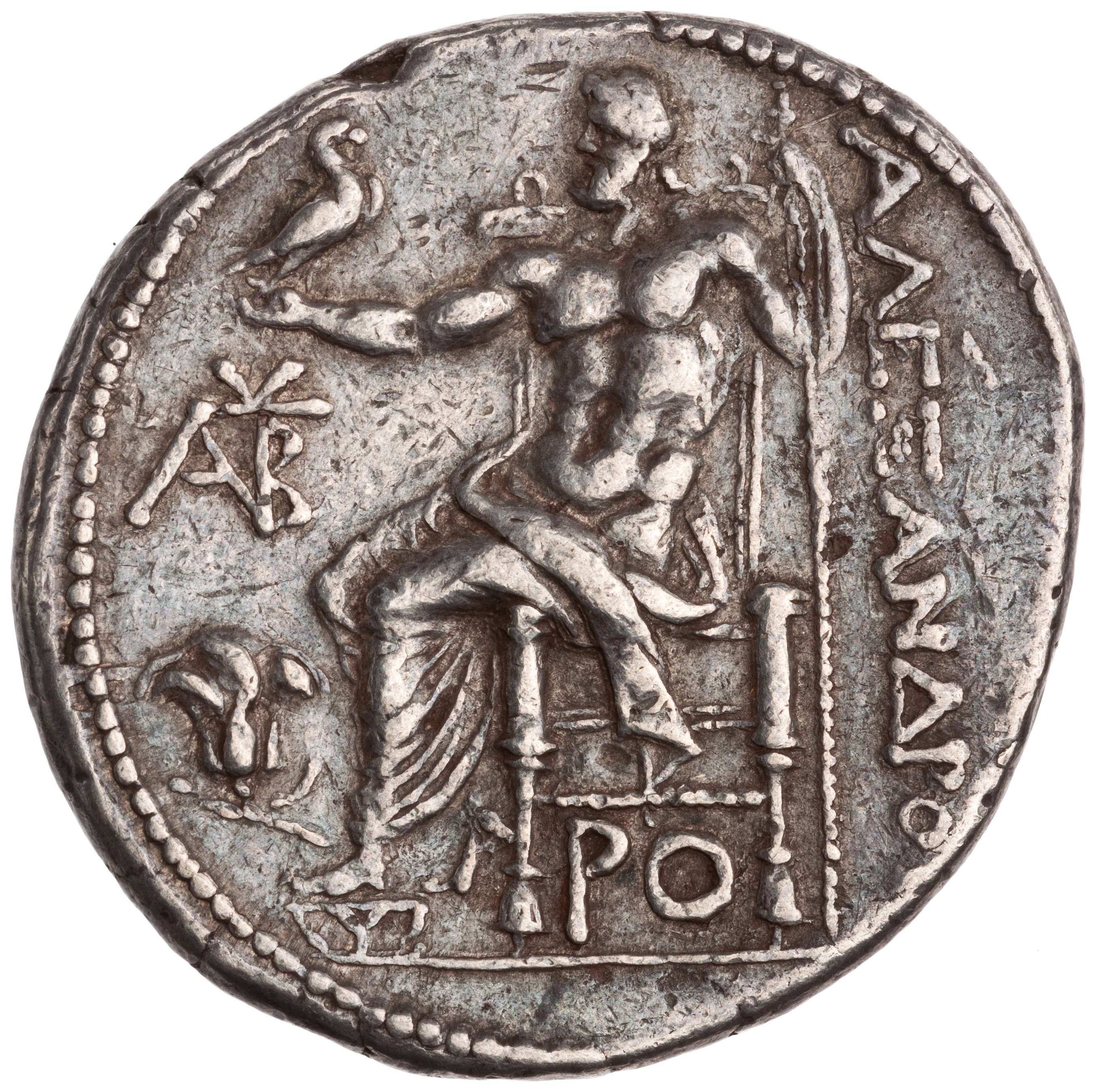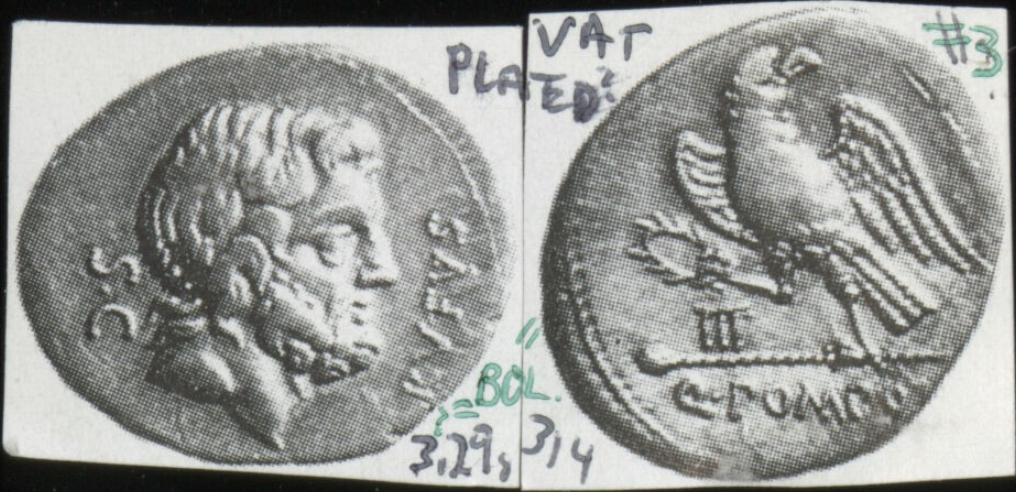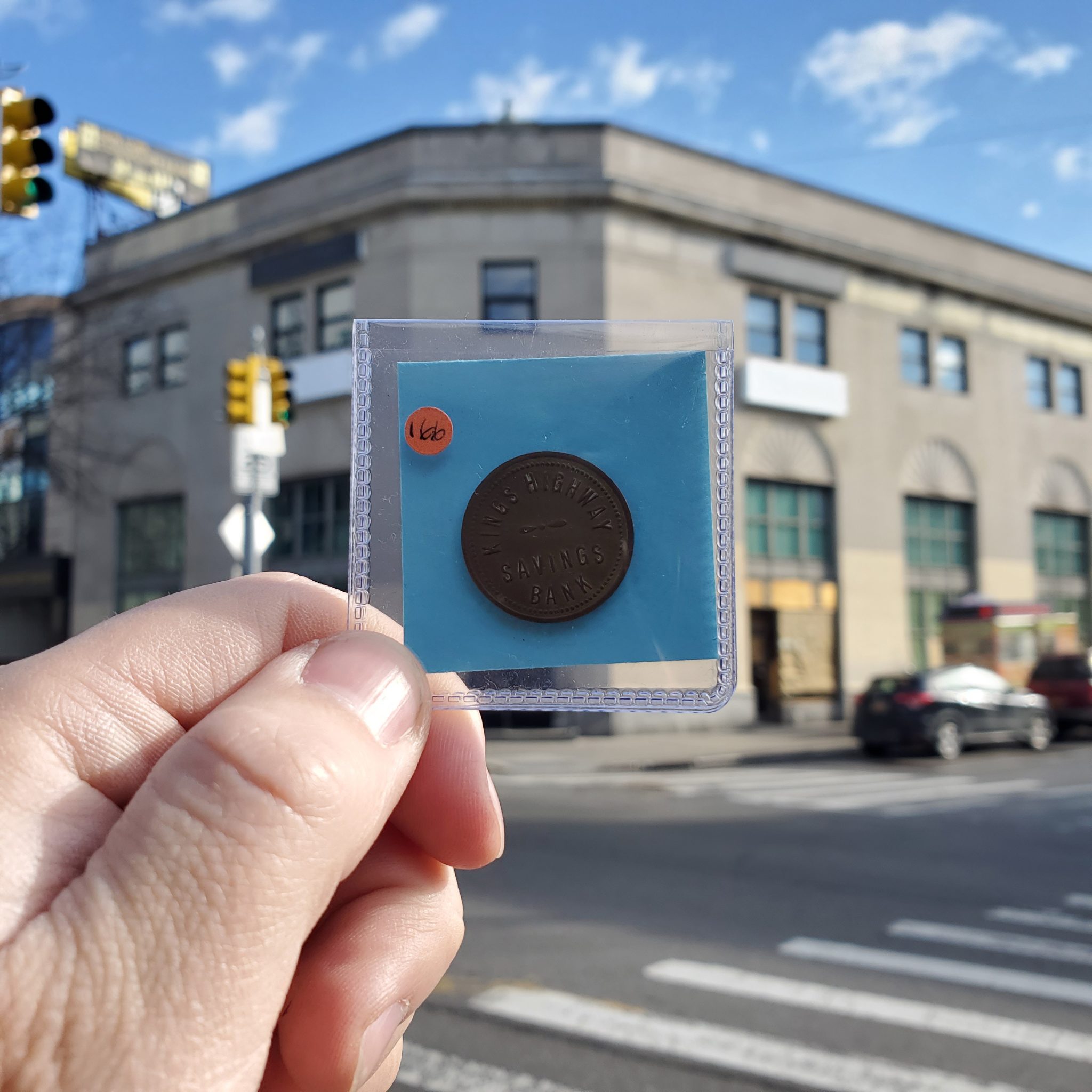A New Monograms Function in Hellenistic Royal Coinages
One of the more enigmatic aspects of ancient Greek coinage, and Hellenistic coinage in particular, are the many symbols and monograms that appear on them. Already in the early fifth century BC, some coin producers, such as the exiled Samians in Zancle in Sicily, began to put letters and symbols on their coins that served functions beyond just identifying the political authority, like the abbreviated ethnic, ΑΘΕ, that appeared on early Athenian coinage identifying the Athenians as the producers of the new owl coinage.
In the case of the Samians at Zancle, the sequence of letters on different issues, Α, Β, Γ, etc., clearly were not ethnics, but probably meant to distinguish the individual issues.
The most convincing arguments to date suggest that these letters represent the sequential years of production, e.g., Year 1, Year 2, Year 3, etc.
Over time Greek coins became increasingly “chatty” with more letters and symbols appearing on them, usually on the reverse alongside the ethnic or name of a king or magistrate.
While many of these letters are clearly era dates, some of them, especially the combined letters we call monograms, are not. Their function along with the multitude of additional symbols—everything from representations of animals to cups to weapons to plants, and so on—are far more perplexing. Some symbols we believe are “mint marks” serving much the same function as ethnics, identifying the authority or place of production, such as a rose on some posthumous Alexander types indicating that they were produced on the island of Rhodes under the authority of the Rhodians.
Some of the symbols that we cannot so easily link to a specific political authority or place of production may have served other functions, identifying, for example, a lower-level authority responsible for the production of the that specific batch of coinage, or the source of the metal, for example. Similar arguments are made for many of the monograms.
In order to truly understand the function of these symbols and monograms, we need a comprehensive electronic database of all of them, something which would include the estimated 10,000 separate monograms and thousands of additional symbols that appear on Greek coinage from early 5th century down to the end of the Hellenistic period. Such a comprehensive database would allow us to observe with greater accuracy where and for how long specific monograms and symbols were used, which in turn might offer some insight into their specific function. A number of researchers independently have been toiling away on monograms and symbol databases for specific subsets of coinage. For example, our colleagues in Berlin, led by Ulrike Peter, working the Coprus Nummorum have been building an important database of monograms and symbols appears on coins produced in ancient Moesia Inferior, Thrace, Mysia, and Troas. Dr. Peter along with other members of the Greek steering committee of Nomisma.org, who have been working on other databases, have been holding discussions on how to combine all efforts into a larger universal database.
At the ANS, our efforts towards this larger goal have, for the moment, focused on the coins covered by our Hellenistic Royal Coinages project: the coinages (in the name) of Philip II of Macedonia; the coinages (in the name) of Alexander III the Great; Ptolemaic coinages; and Seleucid coinages. With the help of Mark Pyzyk, Lauren Tomanelli, and Oliver Hoover, we have been systematically digitizing all of the monograms appearing on these coins—nearly 5,000 individual monograms—creating scalable and printable svg files for each one. Individual nomisma.org IDs are then created for each monogram, which is then linked to the type record in HRC for the coin type on which the monogram appears, whether in PELLA, Seleucid Coins Online, or Ptolemaic Coins Online. In the meantime, I have been identifying the Greek letters that to my eye at least appear in these monograms trying to be as inclusive as possible. All of our work now has added a new dimension of functionality to HRC.
When users select the “Symbols” tab at the top of the PELLA landing page, for example, they are presented with images of the first 24 of the 1,207 monograms appearing on the coinages (in the name) of Alexander. Users can continue to search visually for the monograms that interests them, or can parse by selecting constituent letters. Once the desired monogram has been located, clicking on the image of the monogram takes them to a separate page that includes metadata information, a map of where coins produced with that monogram were struck, and links to examples of coins in PELLA with that monogram. For the symbols that appear on the coins, such as a rose, users can employ the symbol search function locating on the left-hand side of the browse screen, specifying where on the coin the symbol appears.
Currently, the monogram functionality is limited to just PELLA and PCO, but soon it will be added to SCO as well. Our ultimate goal remains to combine these three separate monogram and symbol tools into one that is much larger including not just our work on the monograms and symbols appearing on Hellenistic Royal coinages, but the work of others on different groups of Greek coinage as well.
For more information on this new monogram functionality please see the blog of our Director of Data Science, Ethan Gruber.



